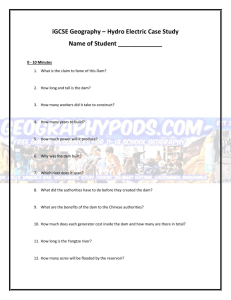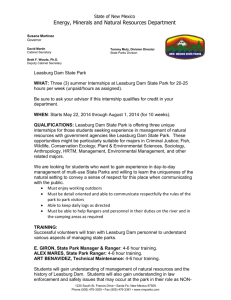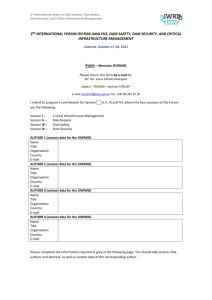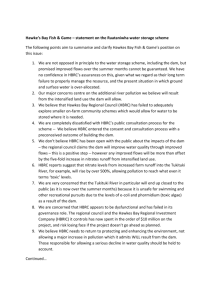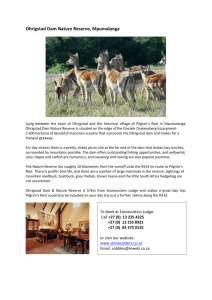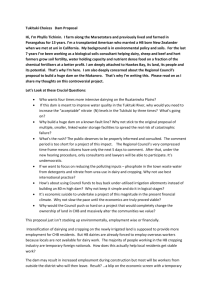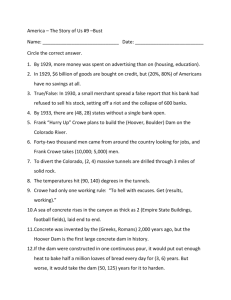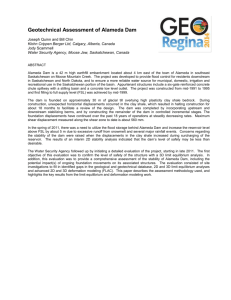Reply to Alternative Proposal - Hawke`s Bay Regional Council
advertisement
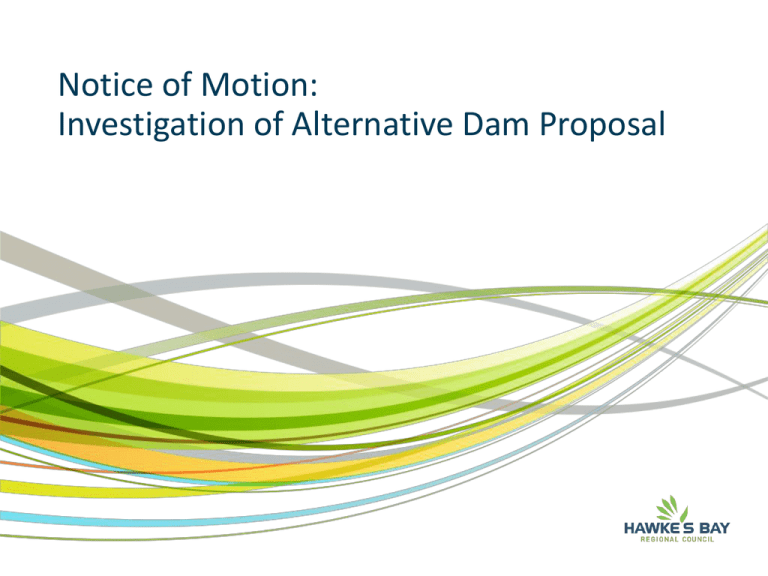
Notice of Motion: Investigation of Alternative Dam Proposal Core assumptions of alternative proposal • Cheaper ‘dam-only’ proposition – do away with distribution network (or minimise the network) • Can use dam on Makaroro at similar scale • Water price can be reduced through alternative • Dam-only has improved environmental outcomes • Only public sector funding to be used Alignment with Council-approved proposal • Water Storage is critical for Hawke’s Bay • Makaroro Dam site is only feasible dam site • Some river corridors offer a means of water distribution – the Tukituki main stem is primary target with approx 5,000 ha irrigable below the confluence • Water storage needs public sector to finance it (in part) Removal/minimisation of distribution network • Waipawa River loses 3.0 -4.7 cumecs of surface water to ground water in the reach Mangaonuku and SH50 • At 3 cumecs that's about 95 million m3 per year – about the same as the static storage of the dam • Groundwater goes to bottom end of basin • A head race is required from Waipawa to Tukituki Rivers to avoid the Waipawa losing reach and allow water supply to Zones B,C ,D and M and lower Tukituki. • The head race makes up approx. one-third the cost of the distribution network (c. $42 million) Removal/minimisation of distribution network • Without the head race neither the Council-approved nor alternative proposals would be able to supply water to 70% of the customer base • If the water was moved via natural waterways only it could service about 10,000 ha of land • The RWSS canal headrace has capacity of 8.8m3/s to service 17,200 ha which requires 58m m3 of water and has a cost of $42m. This equates to 0.72c/m3 • Alternative proposal for 10,000 ha requires capacity of 5m3/s using 40m m3 and has an estimated cost of $36m. This equates to 0.90c/m3 Smaller dam • The current dam has a 90m m3 storage volume to service 25,000 ha, which has a value of $120M = $1.34/m3 of water • A dam to service 10,000 ha (alternative proposal) requires 40m m3 and has a value of $99M = $2.50/m3 of water The price of water Alternative Proposal Alternative Proposal without Opex Capex $135M (99-dam, 36 – distribution) $135M All other capex (land purchase etc) As HBRC approved proposal As HBRC approved proposal Electricity revenue $6M $6M Saleable volume 36M m3 36M m3 Financing HBRIC (80M) plus institutional investors HBRIC (80M) plus institutional investors Opex cost Pro rata reduction in opex costs but retain all Centralines costs Pro rata reduction minus Centralines and SPV Cost per m3 of water $1.18 0.77c Environmental outcomes • Alternative proposal assumes groundwater can be pumped with no effects • However the effects would significantly compromise all spring fed streams in Zones B,C and D • These streams provide key spawning native fish habitats • The dam size would have to accommodate flushing flows – adding approx 4M m3 to the size. • On-farm storage of 90M m3 would need 3,600 ha of land Avoiding “expensive cost of private money” • The alternative proposal proposes that private sector capital be removed and the dam be publically funded via HBRIC Ltd and the Crown. This would remove the need for high commercial returns • One of CIIL’s principles is that it will invest only once private sector capital has been exhausted. They will not enter into a financial structure not involving the private sector. • HBRIC (HBRC) cannot reasonably fund the difference Other key considerations • Commercial and structural issues with any major departure from RWSS as proposed: • Plan Change 6 will need to be substantially re-written for groundwater abstraction • Alternative proposal will need to be consented • No unified control of nutrients • Construction contract will need to be significantly renegotiated and economies of scale could be compromised for a smaller project • Crown would need to completely re-organise their investment criteria to suit an amended RWSS Conclusion • All the issues raised by the alternative proposal have, in one way or another, been put forward, examined and discarded, through pre-feasibility and feasibility stages • The HBRC-adopted proposal brings together the optimum package for cost, water uptake and price • The alternative proposal: • Is not hydrologically feasible • Will increase the unit cost of water • Will necessitate additional plan changes and resource consent processes • Could jeopardise extensive arrangements already negotiated.

